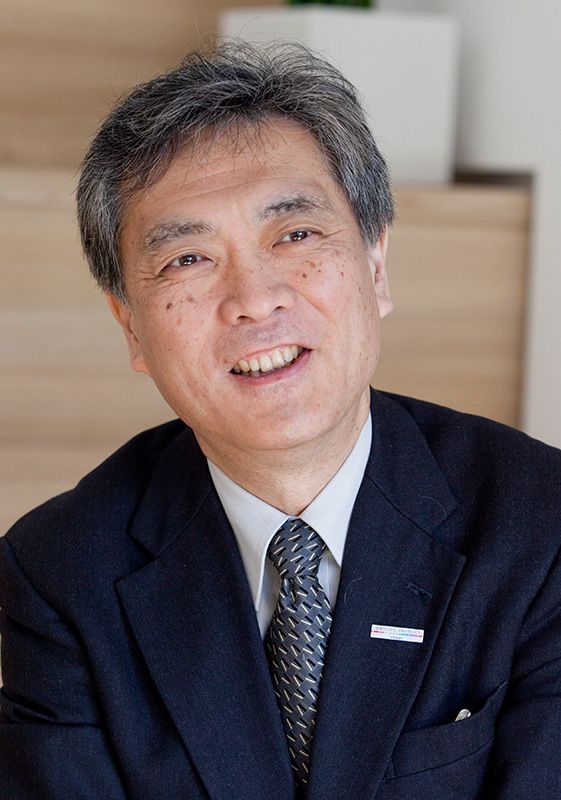
Japanese Approaches to an Eco-Life
Eco-Japan
Society Culture Lifestyle- English
- 日本語
- 简体字
- 繁體字
- Français
- Español
- العربية
- Русский

Kobayashi Hikaru
Born in 1949 in Tokyo. Joined the Environmental Agency (now the Ministry of the Environment) in 1973. Was responsible for hosting COP3, the Third Conference of the Parties to the UN Framework Convention on Climate Change, in Kyoto in 1997 and international negotiations over the Kyoto Protocol on climate change. In July 2009 he became administrative vice-minister for the environment. He retired from the ministry in January 2011. Currently a professor in the Faculty of Environment and Information Studies at Keiō University. He has written extensively on eco-housing and sustainable living.
The March 11 disaster and the nuclear crisis that followed have wrecked Japan’s reputation for safety. International visitor numbers have plummeted. People have started avoiding Japanese agricultural produce, and even industrial products have been subjected to radiation screenings. The country urgently needs to repair its image.
Keiō University professor Kobayashi Hikaru, formerly the government’s administrative vice-minister for the environment, believes Japan should aim to build a reputation for itself as a world leader on ecological issues. One of the keys to this effort will be to revive traditional Japanese ideas of living in harmony with nature and apply them to the needs of the twenty-first century.
Rooted deep in Japanese culture is the concept of mottainai. Broadly similar in everyday use to the sentiments expressed by English expressions like “waste not, want not,” the concept of mottainai goes deeper, expressing a sense of regret prompted by a failure to make full use of the intrinsic value of an object or resource. This concept, which has recently come to international prominence through the work of the Kenyan environmentalist Wangari Maathai and others, is an intrinsic part of an animistic view of the world that perceives a spiritual presence in all natural phenomena. This reverence for nature is an integral part of traditional Japanese culture and remains lodged securely at the heart of Japanese life today, despite the dramatic changes the country’s physical and cultural landscapes have undergone in the modern era.
Kobayashi believes the time is ripe for a return to basics. The massive rebuilding efforts underway in Tōhoku are likely to take years. At the same time, millions of people around the country have responded positively to calls to save electricity in the face of an energy shortage brought on by the nuclear accident in Fukushima. Energy-saving, or setsuden, is a phrase on everyone’s lips. “Now is the ideal time for us to promote the traditional Japanese philosophy of harmony with nature,” Kobayashi says.
Kobayashi says much of the groundwork has already been done. Japan has already chalked up a number of major successes in the environmental arena. The nation’s government has been publishing white papers on the environment for longer than any other country in the world, he points out. Important international agreements on the rules governing human interaction with the natural world were also passed here, including the Kyoto Protocol (1997) on global warming and the Nagoya Protocol (2010) on the use and sharing of genetic resources. Kobayashi says that Japan should work to make more people around the world aware of these initiatives and successes.
Japan needs to build on these achievements and take advantage of the post-3/11 national mood to create a new international image for Japan as an environmental leader for the twenty-first century. “Japan should be offering industrial appliances, local specialties, and methodologies based on this philosophy to the world,” states Kobayashi. “If we can move beyond short-sighted arguments and lift the conversation to a higher level, Japan should succeed in becoming a vital member of the international community.”
In terms of concrete ideas Kobayashi points to the recent trend for recycling houses and making effective use of old building materials. This desire to eradicate waste is a perfect embodiment of the mottainai idea, as well as a homage to the mysterious beauty of wood polished over many years.
It also represents something of a shift from the recent tendency in Japan to build for the short term. This tendency to demolish and rebuild at frequent intervals is part of the reason for Japan’s dramatic modern cityscapes, but in the area of residential construction, at least, Kobayashi suggests the time has come for a new approach.
“We need to change the way we think about housing. At the moment, the approach in Japan is to knock everything down and rebuild. We need a new approach based on houses that three generations can continue to live over the course of a hundred years.
“Building houses that people can use over several generations helps to preserve the natural greenery and the overall appearance of the urban environment. Designing buildings to last into the future will require improvements in seismic resistance technology to ensure long-term safety, but if you split the costs over several generations, the burden on any single generation is relatively small.
“Another idea I’d like to see implemented is the greater use of planted slopes and embankments. This might lead to a new style of urban design matching twenty-first century requirements. Earth could be piled up to make embankments and areas of greenery linked together via lines and flat surfaces. This might mean a decrease in the floor area ratio of buildings, but that problem can be solved by making more efficient use of underground spaces.” Kobayashi suggests that this could help to make buildings more eco-friendly too. “One advantage of underground areas,” he says, ”is that because they are cut off from sound and light, they are not subject to such severe fluctuations in temperature.”
(Originally written in Japanese by Hayashi Aiko, science writer, based on her interview with Kobayashi. Photos by Kawamoto Seiya.)
Related Content
Kobayashi Hikaru, administrative vice-minister for the environment
A New Brand for Japan
environment ecology CO2 eco house harmony with nature symbiosis nature